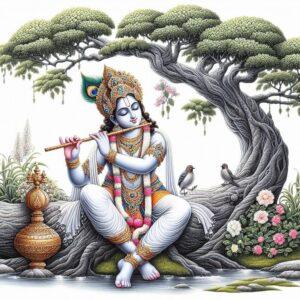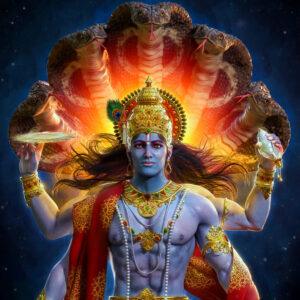
Surya, revered as the Sun God in Hindu mythology, holds a central position in Indian culture and traditions. This blog delves into lesser-known aspects of Surya, illuminating his attributes, names, and significance. Whether you’re a devoted follower or simply curious, this exploration will deepen your understanding of this revered deity.
Surya’s Physical Attributes
Understanding Surya’s Distinct Characteristics
Surya is often portrayed with unique physical characteristics in various texts and art forms. Ancient scriptures describe Surya as possessing a towering and majestic stature. His radiant face and golden complexion symbolize the sun’s brilliance, embodying its life-giving energy. These depictions emphasize his divine power and the awe he inspires.
- Iconography: Surya is typically depicted with two arms, each holding a lotus, symbolizing purity and enlightenment. He is often shown riding a chariot driven by seven horses, representing the seven colors of the light spectrum and the days of the week. This imagery highlights his role as a celestial traveler, bringing light and life to the world.
- Seven Horses: These horses, symbolic of the seven colors of light and the seven days of the week, represent the cyclical nature of time and Surya’s constant journey across the sky. They also signify the speed and power with which Surya brings light and energy to all beings.
- Crown and Jewelry: Surya’s crown and jewelry, adorned with sun motifs, emphasize his divine nature and regal status. These embellishments further highlight his radiance and the splendor associated with his celestial presence.
- Artistic Depictions: Temples and sculptures across India showcase Surya’s image in various forms, reflecting his powerful role in Hindu mythology. These artistic representations serve as reminders of his enduring presence and the reverence he commands.
Surya’s Age and Eternal Nature
Timeless Significance of Surya
Surya is regarded as eternal and ageless within Hindu mythology. Ancient texts like the Vedas, dating back thousands of years, mention Surya, signifying his enduring presence throughout history. He represents the unchanging source of light and life, transcending the limitations of time.
- Constant Worship: Surya’s worship has evolved over centuries, adapting to changing cultural landscapes while remaining a constant in Hindu rituals. This continuous reverence underscores his enduring importance in spiritual practice.
- Stories from Puranas: Narratives from the Puranas illustrate Surya’s everlasting presence and influence on the cosmos and human life. These stories highlight his power, benevolence, and role in maintaining cosmic order.
- Cyclical Time: In Hindu cosmology, Surya’s role is perpetual, driving the cyclical nature of time and the continuous renewal of life. His daily journey across the sky symbolizes the recurring patterns of creation, preservation, and destruction.
- Surya Namaskar: The practice of Surya Namaskar, or Sun Salutation, connects devotees with Surya’s timeless energy, fostering both physical and spiritual well-being. This sequence of postures honors Surya’s life-giving power and invites his blessings.
Surya’s Various Names and Epithets
Exploring Different Aspects of Surya
Surya is known by a multitude of names, each reflecting a specific attribute of his divine nature. These names offer insights into his diverse roles and powers, enriching our understanding of his complex identity.
- Common Names: Names like Ravi (meaning “radiant”), Aditya (“son of Aditi”), Bhanu (“shining”), and Martanda (“son of a dead egg”) are commonly used to invoke Surya. Each name carries specific connotations and is used in different contexts.
- Meaning and Significance: Each name associated with Surya links to specific attributes, stories, and aspects of his divine persona. Understanding these connections deepens our appreciation for his multifaceted nature.
- Regional Variations: The diverse names used for Surya across different regions of India showcase the cultural richness and variations in his worship. These regional variations highlight the adaptability and widespread reverence for Surya.
- Epithets: Epithets such as ‘Suryanarayana’ (Surya as the source of all beings) and ‘Divakar’ (maker of the day) are frequently used in hymns and prayers to invoke Surya’s blessings. These honorific titles emphasize his power and benevolence.
- Rituals and Ceremonies: Different names of Surya are invoked in various rituals and ceremonies, highlighting the specific aspects of his power being sought or honored. This practice reflects the nuanced understanding of Surya’s diverse manifestations.
Surya Namaskar: Benefits and Historical Context
Honoring Surya Through Practice
Surya Namaskar, also known as Sun Salutation, is a sequence of twelve poses that pays tribute to Surya, the source of light and energy. Its origins trace back to ancient rituals of Sun worship, but the modern practice was popularized in the early 20th century by Bhavanarao Pant Pratinidhi, detailed in his 1928 book “Surya Namaskar”. Although not initially part of traditional Yoga, it has become a vitalizing modern yogic practice. The practice is believed to have stemmed from ancient Sun worshiping rituals. Bhavanarao Pant Pratinidhi popularized it in the early 20th century, as described in his 1928 book “Surya Namaskar.” Not originally part of traditional Yoga, it has become a revitalizing modern-day practice.
Physical Benefits: Surya Namaskar improves flexibility, strengthens muscles, and boosts cardiovascular health. Each pose engages different body parts, promoting overall fitness.
Mental Clarity: The flowing sequence combined with controlled breathing calms the mind and reduces stress and anxiety.
Spiritual Significance: This practice connects practitioners with Surya’s energy, honoring the Sun and expressing gratitude for its life-sustaining light.
Cultural and Ritual Significance of Surya
Surya’s influence is deeply embedded in Indian culture and rituals.
Daily Rituals: Surya plays a key role in daily rituals like Sandhyavandanam, performed at sunrise and sunset.
Major Festivals: Festivals like Makar Sankranti and Chhath Puja celebrate Surya’s significance.
Surya Temples: Architectural marvels like the Konark Sun Temple symbolize Surya’s power.
Astrological Influence: Surya’s position in astrology influences planetary alignments and horoscopes.
How Poojn Helps You Honor Surya Dev
Poojn.in offers a curated collection of items for your Surya-related rituals:
- Pure copper Surya yantra for daily worship.
- Red flowers and specific items needed for Surya puja.
- Traditional red cloth (recommended for Surya worship).
- Pure copper surya arghya vessel for water offerings.
- Handpicked red sandalwood for tilak.
- Special incense sticks suited for Surya puja.
Visit Poojn.in or call our support line for assistance.
Conclusion: Embracing Surya’s Legacy
Surya’s presence enriches our lives through practices like Surya Namaskar. His cultural significance, evident in rituals, festivals, and artistic representations, highlights his profound influence. Embracing Surya’s legacy deepens our connection with our heritage, nurturing our body, mind, and spirit.


